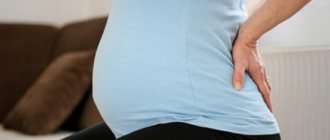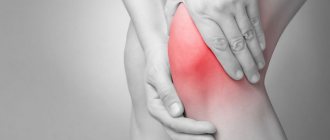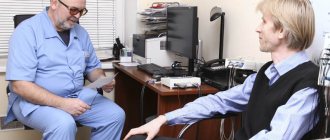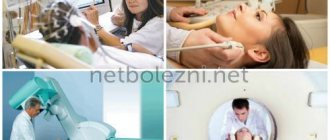Ear pain in adults is one of the most unpleasant sensations, comparable only to toothache. It appears suddenly and causes severe discomfort, making you forget about normal existence. When an adult has ear pain, it is very difficult, almost impossible to concentrate on everyday things and worries. Shooting, stabbing, cutting, radiating to the head - this is just an incomplete list of variations of the sensations experienced by adults with ear pain.
Ear pain in a healthy person
Unpleasant sensations in the organ of hearing can occur in a completely healthy person, and there are many reasons for this (we will look at some in more detail):
- sensitivity to strong wind and cold (Due to a long stay in the wind, a hematoma may form in the ear - it will go away on its own in a few days. No additional measures need to be taken in this situation.);
- water getting into the ear;
- presence of sulfur plug;
- mechanical injuries (if, in addition to pain, bleeding from the ear begins, consult a doctor immediately);
- acoustic injuries (occur due to exposure to loud sounds on the organ of hearing, for example, at a rock concert, in a noisy industry, or during prolonged use of headphones. As a rule, the pain goes away when moving away from the source of noise. If, due to the nature of the work, it is impossible to eliminate the source of noise, You definitely need to use special earplugs.);
- barotrauma (manifested by changes in atmospheric pressure; most often occur during air travel or diving. When your ears are blocked on an airplane, you need to yawn more often, swallow, or simply chew something to eliminate the condition of “stuffiness”);
- foreign body.
Prevention
It is impossible to completely protect yourself from diseases in the ear area. But it is possible to create conditions to minimize the risks of developing pathological changes. It is very important to follow a number of rules to increase the body’s immune response and reduce the risk of developing ear diseases.
Among the prevention points, important ones are
:
- It is mandatory to wear a hat, especially in cold weather. When it rains, you should wear a scarf or hood and try to avoid the wind.
- When carrying out hygiene procedures, it is not recommended to use matches, paper clips or pencils. The use of cotton swabs should also be controlled. Using them too often provokes increased production of a specific secretion. Increased production can cause a plug to form.
- Sudden movements in the ear canal area can cause damage to the eardrum. Damage provokes the development of hearing problems. It is important to promptly contact an otolaryngologist if any discomfort occurs. This will help prevent the development of complications and promptly eliminate the development of pathology.
If a person’s work involves constant contact with sharp and loud sounds, it is recommended to use special headphones aimed at isolating sounds. Diseases of the nasopharynx and throat also should not be left to chance. Due to the close connection of the ear canal, nasal passages and pharynx, any pathological process can move along these paths and provoke serious complications.
Water getting into the ear canal
Normally, water that enters the auricle due to the anatomical features of the structure of the hearing organ flows out of it independently. If for some reason she did not succeed, she needs to be “helped.” There are a couple of simple ways to do this.
Make an appointment right now!
Call us by phone or use the feedback form
Sign up
Method one: tilt your head to one side; bring your hand to the shell of your ear, press it hard, and then release it. The hand will act here as a pump - excess liquid will flow out.
The second method is probably known to everyone since childhood. We tilt our heads to the side and perform jumps on one leg: if the liquid has flowed into the right ear, then on the right, if into the left, on the left, respectively.
Method three. Dry your ear with a towel, take a deep breath and close both nostrils. Without unclenching your fingers, try to exhale, but without opening your mouth! If this manipulation is performed correctly, the excess liquid will be pushed out with the help of air. Method four: you can simply lie on your side, depending on which side the water poured in, and hold there for a short time, periodically making swallowing movements: the water will flow out on its own. If none of the methods brings results, and the fluid inside continues to cause discomfort, you need to seek help from an otolaryngologist.
Sulfur plugs
Earwax is an accumulation of earwax in the ear, which subsequently hardens and causes discomfort, tinnitus appears, and hearing loss decreases. In a healthy person, excess sulfur is removed spontaneously, for example, when chewing. But in some people, wax cannot be removed on its own; it accumulates near the ear canal, hardens and forms a plug. There is no need to try to get rid of the cork on your own, much less try to remove it with sharp objects (matches, toothpicks, etc.) - damage to the tissues of the shell or eardrum cannot be avoided in this case. The plug is removed by an ENT doctor. The procedure does not take much time: first he softens the plug with oil or solutions, and then rinses it with a special syringe or removes the sulfur plug with a special Wojacek hook.
Acoustic ear injury
Acoustic ear injury is damage to the hearing organ caused by sounds of excessive force and duration. The organ cells responsible for the perception of sound waves have different resistance to noise. Because cells that sense high-frequency sounds are more vulnerable, high-pitched sounds are more likely to cause acoustic injury.
After traumatic sound exposure, a person’s hearing sharply deteriorates. He complains of ringing and pain in his ears. The consequence of acoustic trauma can be dizziness. When exposed to a powerful sound wave, the eardrum sometimes ruptures. In this case, blood appears in the ears. After severe acoustic trauma, hearing loss develops.
Foreign body
Getting a foreign object into the ear is not uncommon. Moreover, not only children suffer from this when they place beads, peas, small parts of toys into the ear canal, but also adults when they carelessly clean their ears with sharp objects (matches, toothpicks, etc.) or test the advice of traditional medicine on themselves by sticking gauze inside , cotton wool and even food. Insects or small objects can get into the ear canal due to injuries or accidents. If you suspect that a foreign object has entered the hearing organ, you should not try to cope with the problem yourself: this can lead to damage to the ear canal. With inept movements, you can push the object even further into the depths, thereby greatly aggravating the situation. Help from a doctor for pain caused by a foreign body is the only sure way out!
Associated symptoms
The inflammatory response often causes an increase in body temperature. Hyperthermia can be moderate or severe. The inflammatory process, complicated by a pyogenic infection, can increase body temperature to +38...+39 °C and higher. Simultaneously with hyperthermia, other signs of intoxication appear. People complain of chills, loss of energy, headaches, and loss of appetite.
Ear diseases in adults
Painful sensations can occur due to direct pathologies of the ear. These include: otitis media, eustachitis, tumors.
Otitis is an infectious inflammation of the ear, the leader among diseases of the ENT organs in terms of the number of visits to an otolaryngologist. The causes of the disease are untreated infectious diseases of the upper respiratory tract (tonsillitis, pharyngitis, laryngitis, sinusitis), rhinitis, a deformed nasal septum, damage to the auricle, penetration of water into it or infections after self-cleaning the ear with foreign objects.
The human hearing organ consists of the outer, middle, and inner ear. Accordingly, external, middle and internal otitis are distinguished.
Otitis externa covers the ear canal. Basically, the disease develops when water penetrates into it while swimming. There is even the term “swimmer’s ear”: otitis media occurs with frequent contact with water. For treatment of ear pain caused by otitis externa, you should contact an otolaryngologist.
Friends! Timely and correct treatment will ensure you a speedy recovery!
Otitis media: a third of all visits to an otolaryngologist are associated with this type of otitis. The main complaint of patients is shooting pain in the middle ear. The disease can occur in several forms: acute, exudative and chronic purulent.
Internal otitis (labyrinthitis) is an inflammatory disease of the inner ear. The disease is severe and occurs infrequently: usually as a complication of otitis media or a severe form of another infectious disease (for example, tuberculosis).
If you suspect inflammation, you should not self-medicate: incorrectly prescribed treatment for otitis media or an undertreated condition can cause serious complications. Only an otolaryngologist can provide effective assistance to an adult with otitis media.
Eustachitis is an inflammation of the Eustachian (auditory) tube, which connects the organ of hearing to the nasopharynx. The Eustachian tube is needed to better capture sounds and ventilate the middle ear through the nasopharynx. With the qualified help of an otolaryngologist, treatment of ear pain caused by eustachitis occurs quickly, and relief occurs in a couple of days.
Ear tumors are uncommon. CT and MRI are used to determine pathology.
Ear pain with pathologies of other organs
When ear pain is directly related to diseases of the hearing organ, diagnosing and treating ear pain in adults is usually not difficult. It is much more difficult to help adults with ear pain if there are no visible pathologies upon examination. In such situations, we talk about otalgia - a condition when there is ear pain, but there is no inflammation.
Diseases that cause otalgia include:
- mastoiditis;
- This is an inflammation of the mastoid process of the temporal bone, located behind the auricle; as a rule, the disease develops as a complication after otitis).
- diseases of the temporomandibular joint located behind the auditory canal;
- This joint can be subject to pathologies such as arthritis, arthrosis, dislocations, which leads to pain in the hearing organ.
- dental diseases;
- problems with the spine;
- inflammation of the pharynx (acute tonsillitis, pharyngitis, peritonsillar abscess);
- oncological diseases of the pharynx;
- sinusitis;
- neuralgic pathologies;
- intracranial tumors.
When to see a doctor
If your ear hurts and shoots, then this is a reason to immediately visit an ENT doctor . It’s worse when the temperature rises, indicating developing inflammation. Weakness of the facial muscles, swelling of the parotid tissues, throbbing pain are signs of dangerous processes.
With prolonged inflammation, purulent masses break through the eardrum and flow out of the ear canal. If necessary, the abscess can be opened by a doctor. Further treatment is carried out with warming compresses, physiotherapy, disinfection of the ear canal with solutions of Furacilin or Boric acid.
Without treatment, it is possible that complications may develop with complete or partial hearing loss and brain damage. If the unpleasant symptoms suddenly stop, this may be a sign of a ruptured eardrum.
Ear pain - what to do?
As we can see, pain syndrome has a different nature of occurrence. Only a doctor can understand the real cause, establish the correct diagnosis and offer an effective treatment for ear pain in adults. An otolaryngologist treats ear diseases in adults. If you encounter such a problem, immediately contact a specialist.
Unfortunately, it is not always possible to visit a doctor right away. More often, unpleasant symptoms appear suddenly and at night. First of all, you need to take a pain reliever - an ibuprofen-based painkiller. It has anti-inflammatory properties and is most effective compared to other drugs.
If pain is accompanied by a runny nose, it would be a good idea to use vasoconstrictor nasal drops.
The first thing many patients do is run and buy ear drops for pain. But each drop has its own purpose: in one case they can fully treat, in another - not. Drops are not a universal remedy. Statistics show that when treating ears, in half of the cases patients mistakenly prescribe medications to themselves. Drops should be used only when you are completely confident in your diagnosis.
Drops will not help with injury - in such a situation it is better to take a painkiller and consult an ENT doctor. Heat compresses should not be used before consulting a doctor. For example, with purulent otitis, such a measure will only worsen the patient’s condition.
Before visiting a doctor, do not go out into the cold without a hat, do not try to clean the ear from secretions and pus in its depths on your own, and do not instill alcohol-based products.
As a rule, for ear infections of the middle ear, antibacterial agents are prescribed. For external inflammation - antibiotics in the form of drops. In any case, consultation with an ENT specialist is mandatory! Folk remedies can be used in combination with drug therapy and only after an accurate diagnosis, that is, after visiting a doctor.
Why does it jerk on the left?
If older patients complain that the left ear is shooting, this may be due to arthrosis changes in the joints. The disease mainly affects the spine, hip and knee joints. But sometimes the jaw joints are involved in the pathological process, and mainly the left or right side is affected.
In older people, damage to the articular-ligamentous apparatus is a fairly common problem, so it is necessary to undergo an examination, and not think about what to put in or how to help so that the ear does not shoot. The doctor will choose the right treatment tactics.
If you shoot with pain near your ear, you can suspect:
- inflammatory processes of teeth and gums. In this case, the pain intensifies when touching the affected tooth or touching the inflamed gum;
- trigeminal neuralgia. The pain syndrome usually affects one half of the face. The malaise is paroxysmal in nature, reminiscent of lumbago.
Diagnosis and treatment of ear pain in Moscow
At the appointment, the doctor talks with the patient, collects anamnesis and conducts an examination using an otoscope, assesses the condition of the outer ear, ear canal and eardrum. He examines the pharynx, larynx, oral cavity and nasal passages. Sometimes the patient is referred for audiometry. If the cause of the pain is injury, you will also need to do an X-ray or CT scan.
Ear treatment in Moscow is offered by many medical institutions: from district clinics to multidisciplinary medical centers. The final cost of ear treatment in Moscow depends on the type of medical institution and its pricing policy. "ENT Clinic of Doctor Zaitsev" specializes in diseases of the hearing organs. Treatment of ear diseases is our specialty. We use the most modern equipment from famous world manufacturers. Our doctors' many years of experience allow us to successfully diagnose hearing pathologies and offer the most effective treatment. Prices for our services have not changed for more than three years.
If ear pain and other unpleasant symptoms appear, do not tolerate it and do not self-medicate. Please call, make an appointment and come. We will be happy to help you!










